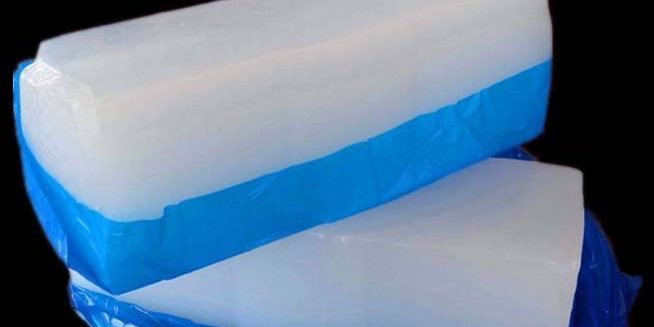Is silicone rubber or plastic? Silicone, scientifically known as polysiloxane, lies in a gray area, but it’s generally considered a rubber. It’s a human-made elastomer (a polymer with elastic properties) that has the properties of both plastic and rubber. Silicone can be used to form liquids, hard solids, and rubbery products, but since elastomers are generally referred to as rubbers, it’s also usually referred to as a rubber. Silicone is also easily confused with silicon, though they are different materials. Silicon is an element, while silicone is a polymer (a large molecule with repeating units).
Types of Silicone Rubber
Built on a base of silicon and oxygen (as opposed to plastic’s base of carbon and hydrogen, which is less stable), groups of organic molecules (including methyl) lend silicone rubber its flexibility. Silicone rubber has several variants with traits that differ depending on the application for which it’s used.
- Methyl groups go under the name MQ. These are the basic silicone rubbers that were first developed.
- Methyl vinyl groups, which feature good compression traits, are known as VMQ. These are the most commonly used types of silicone rubber since the vinyl helps with vulcanization.
- Methyl phenyl (MPQ) and methyl phenyl vinyl (PVMQ) groups are used to increase the rubber’s capabilities in low temperatures.
- Flouro, vinyl and methyl (FVMQ) groups are more chemically resistant to oil, fuel, and solvent.
Among the families of silicone rubber variations, there are three main forms of silicone rubber, depending on the processing method: liquid, room temperature vulcanized, and high temperature vulcanized.
- Liquid silicone rubber has the smallest molecular chains out of the three types, making its polymers a low molecular weight. It can be extruded or injection molded with specialized machinery. This type of silicone rubber is more weather resistant and transparent.
- RTV (room temperature vulcanized) silicone rubber can be from one or a mixture of two components, and hardens at room temperature to soft or medium hardness. It’s generally used for potting, sealant, and encapsulations. Silicone rubber molds are also made from RTV silicone rubber.
- Solid or HTV (high temperature vulcanized) silicone rubber has long-chained polymers with the heaviest molecular weights. This type usually comes in the unprocessed form and must be vulcanized at the same temperature as more traditional types of rubber.
Is Silicone Rubber Safe?
Silicone rubber has been considered safe in the United States for applications in consumer cookware and medical products since the FDA approved it in 1979. It is also approved in Canada. However, the European Union has labeled chemicals D4, D5, and D6, used in the production of silicone rubbers, as concerns, and some newer studies suggest that silicone rubber can leach these chemicals under certain circumstances.
Silicone Rubber Properties
Silicone rubber’s strongest mechanical properties are its temperature resistance and flexibility. This material can handle temperatures between -150 degrees and 550 degrees F before turning brittle or melting, depending on the variant. Its tensile strength is between 200 and 1500 PSI, and its maximum elongation is 700%, which is exceptionally good for rubber. On top of that, it rebounds and compresses fairly well, is heat and flame resistant as well as an electrical insulator, and bonds well with metals. Silicone rubber works well in outdoor conditions, thanks to its UV, ozone, and general weather resistance. It’s also hypoallergenic and water resistant while staying permeable to gases, which makes it popular in medical applications. Since it’s more chemically inert than most plastics, nonstick, and doesn’t stain, it can be found in consumer as well as industrial food and beverage applications. In its sponge form, silicone rubber is lightweight while reducing vibration and noise, so it’s also used in transportation.
However, this material also has some drawbacks. Silicone rubber is not oil resistant for long periods of time, and it can swell after long periods of contact with oil or petroleum, although there are more oil resistant varieties. It’s also not abrasion or tear resistant, and it can get stiffer at higher temperatures. Mostly, though, because of its special properties silicone rubber is one of the more expensive types of rubber, and it’s usually replaced by something cheaper when large amounts are needed.
Silicone Rubber Applications and Uses
Silicone rubber is used across several industries either alone or combined with other materials:
- Electronics applications use some of the most highly purified silicone rubber for insulating tape, sealant, varnish, lubricants, keyboards, and housings. High thickness rubber can be injection molded into insulators and arrestors.
- Aerospace silicone rubber is used in spacesuit fabrics, tooling materials, seals and gaskets, as well as other products used in aircraft manufacturing and maintenance.
- Construction uses silicone rubber for adhesives, sealants, and coatings, thanks to its weathering properties and ability to bond to metal.
- Automotive applications include vibration and weather resistant parts as well as coatings and varnishes, but only the most heat, oil, and fuel resistant types are used for these purposes.
- Medical silicone rubber can be found in tubing, adhesives, and defoamers.
- Consumer products that use this material include anti-stick bakeware, food containers, utensils, toys, and jewelry including silicone rubber band bracelets. However, it can also act as an ingredient in shampoo, laundry soap, cosmetics, and deodorant.





